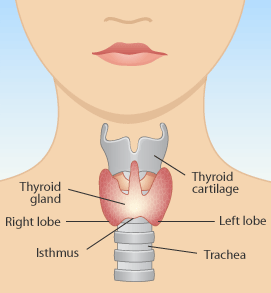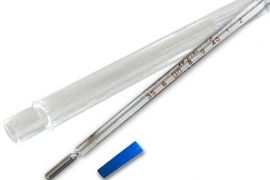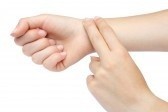I was suffering from exhaustion a few years back and all of my lab work came back with numbers in a “normal” range. Yet I was tired when I got up, I needed a nap during the day, after dinner I didn’t even have enough energy to clean up the kitchen, and I was frequently falling asleep by 8:00.
What this simple iodine patch test showed me was that I was in fact iodine deficient. The lab work may have said normal, but my body was saying otherwise. My energy level immediately perked up after brushing a postage size stamp of iodine on my inner wrist. I was so deficient in fact, that the area I painted on my wrist was completely gone within two hours. I knew that I was on to something.
I added an iodine supplement to my regiment and began to feel noticeably better. While this may not be the case for everyone (there are numerous reasons for exhaustion, including iron deficiency, latent infections, etc). These tests are an inexpensive, painless ways to determine if you may have a deficiency.
What is the Thyroid?
The thyroid is a butterfly shaped gland normally weighing less than one ounce, it is located at the front base of the neck. The thyroid secretes hormones that act throughout the body influencing metabolism, growth and development and body temperature. Its proper function is dependent on two trace minerals iodine and manganese. Of the two, iodine is the most essential for proper thyroid function and health. These simple and inexpensive tests can show if your body has sufficient iodine to normalize thyroid secretions.
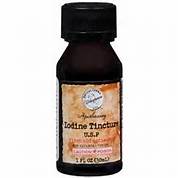
Test One-Iodine Patch Test
With iodine tincture, simply paint a postage size stamp on the inside of your wrist. If the brown stain fades in 24 hours or less, it indicates there is not sufficient iodine to normalize thyroid secretion to the cells. Even if you are taking pharmaceutical thyroid medication, lack of iodine will prevent your body from properly utilizing it.
Iodine Patch Test Instructions
- Its best to do this test in the morning after showering but it is not required. You can start anytime.
- Use Tincture of Iodine to paint a postage square size stamp on the inside of your wrist.
Note: Tincture of Iodine is available from any drugstore or pharmacy. Be sure it’s the original orange colored solution and not the clear solution.
- Write down the time you painted your wrist.
- Observe the coloration of the patch over the next 24 hours.
Interpreting Iodine Patch Results
Overall, the faster the body draws in the iodine, the greater the iodine need is likely to be.
- Patch begins to slightly lighten after 24 hours – NORMAL
- Patch disappears, or almost disappears in 18-24 hours – MILD
- Patch disappears, or almost disappears in 12-18 hours – MODERATE
- Patch disappears, or almost disappears in 6-12 hours – SEVERE
- Patch disappears, or almost disappears in under 6 hours – VERY SEVERE
Repeat Testing
You can repeat this test every 1-2 weeks to monitor the need for iodine. When the patch no longer disappears within 24 hours, adjust iodine dose accordingly.
I prefer whole food supplements whenever possible. You may wish to discuss Standard Process or Medi Herb options with your healthcare practitioner. For reference I have listed the amounts of iodine in the Standard Process and Medi Herb supplements listed below:
Prolamine Iodine—3mg
Thyroid Complex (MH)—600mcg
Iodomere—200mcg
Trace Minerals B12—145mcg
Organically Bound Minerals—250mcg
Min Chex—300mcg
Min Tran—50mcg
Cataplex F (tablets)—95mcg
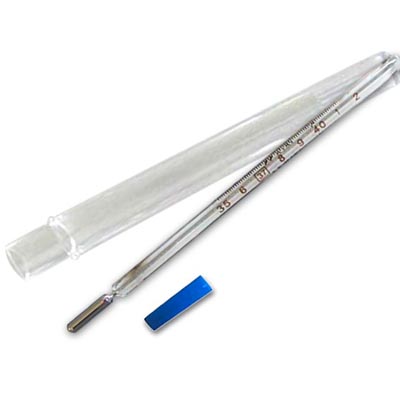
Test 2-Barnes Basal Temperature Test
The Barnes Thyroid Test was developed by Broda O. Barnes, M.D., Ph.D, a physician in Colorado. He found over 50 years ago that body basal temperature was a good indicator of thyroid activity, in particular, the body temperature when arising from sleep. It is Dr. Barnes opinion that this test is superior to standard blood tests to evaluate thyroid function. Blood tests only measure pituitary (TSH) and T3 hormone blood levels while temperature readings measure how much energy is actually being generated in the cells.
If the thyroid is running low, the body’s temperature will drop below normal while the body is resting or asleep. This test is performed by measuring the underarm temperature when you awaken in the morning. To develop an accurate reading the test is done for five consecutive days and the mean average is calculated. You will need a basal thermometer for this test.
Do not test when you have an infection or any other condition that would raise your body temperature.
Do not use an electric blanket for 24 hours prior to taking your temperature.
Barnes Basal Temperature Instructions:
The night before your test, shake down a thermometer below 95 degrees and leave it on your nightstand.
When you awaken, without raising your head from your pillow, place the thermometer under your arm, with the bulb of the thermometer under the armpit.
Leave it there for ten minutes, while resting on your back. Moving around too much will activate the thyroid gland and you get a false reading.
After ten minutes remove the thermometer and write down your temperature.
This temperature reading is your basal temperature. A “normal” range should be between 97.8 and 98.2.
To figure your average, add the temperature reading for all five consecutive days and then divide by 5.
If the thyroid is overactive, your temperature will show 1-2 degrees above normal.
If the thyroid is underactive, your temperature will show 1-2 degrees below normal.
If your results are concerning, blood tests for evaluating thyroid function may be indicated.
It is important to be aware that blood tests can come back showing thyroid function within a normal range even if the thyroid is malfunctioning. The reason for this is because a standard test will show only how much thyroid hormone is circulating in the blood and doesn’t show how the hormones are functioning on a cellular level. Also, the loss of up to 70% of thyroid function may occur before a blood test will show an abnormal result.
References:
Hypothyroidism: The Unsuspected Illness by Broda O. Barnes M.D., Ph.D.

